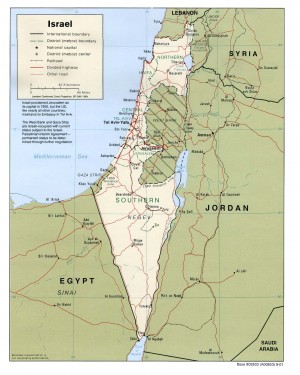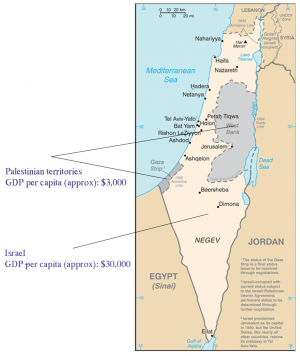 Mitt Romney was absolutely correct when noting, on the 2012 presidential campaign trail, that Israel’s GDP per capita is significantly higher than that in the Palestinian territories.
Mitt Romney was absolutely correct when noting, on the 2012 presidential campaign trail, that Israel’s GDP per capita is significantly higher than that in the Palestinian territories.
But he was actually way off on the specifics: in suggesting that Israelis produced roughly twice as much as do the Palestinians, he vastly understated the wealth disparity. The U.S. Central Intelligence Agency estimated Israel’s per capita GDP at about 10 times (or 1000% more) that of the Palestinians.
In 2011 Israel had a per capita GDP of roughly $31,000, while in 2008 — the last year the CIA listed data for the Palestinians — the per capita GDP. of the West Bank and Gaza combined was about $3,000.
That’s a 1000% difference!
In suggesting that the economic disparity can be attributed to the “culture” of the two peoples, Romney made no reference to a handful of pretty significant factors that, it’s fair to say, have a tad bit of influence on economic conditions in both areas:

1. The West Bank, where the majority of Palestinians live (about 2.5 million of them), has been under tight Israeli military occupation and economic control since 1967, when Israel captured the region in war. According to the CIA: “Israeli closure policies continue to disrupt labor and trade flows, industrial capacity, and basic commerce, eroding the productive capacity” of the economy.
